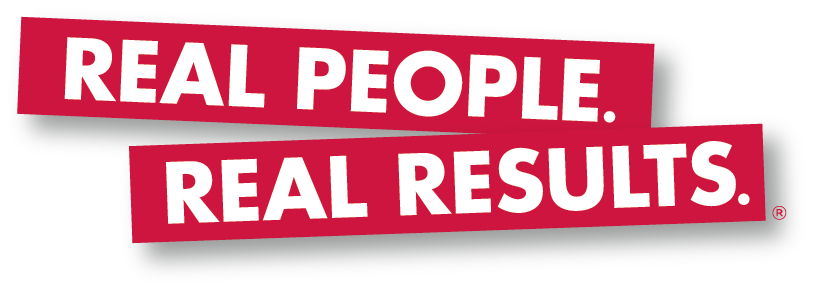As the current pandemic crisis grows businesses of all sizes and industries will look for financial support to keep them operating in the short-term.
Staying up-to-date on changing conditions is important, but proactive planning and building a financial strategy are critical. Brad Sugars’ CEO and Founder of ActionCOACH in his webinar “Crisis Averted” last week (Get recording here https://www.youtube.com/watch?v=o1oAe8ZDFtE) stressed the need to get additional credit and even extend credit during these uncertain times. Securing more credit or an additional lines of credit can help stabilize cash flow and ensure that your business has funds to meet the changing times.
Before seeking additional forms of funding Credit.com urges business and individuals to answer the following questions and evaluate your current situation.
► Exactly how much do you owe right now?
► Who do you owe it to?
► When do you have to pay?
► Does the lender or creditor offer a payment plan?
► Have you talked to the creditor or lender about options?
► What are the consequences of not paying?
► How soon will this crisis be over?
Once you have a clearer picture of the circumstances there are many avenues to consider. Again. Credit.com suggests the following options;
There are several options available to help you manage a financial crisis:
► Credit cards – Credit cards are one of the easiest and cheapest ways to borrow money in a financial crisis. Credit cards work best for a short-term problem that you know you can repay in a few months. You can keep your credit score healthy by keeping your balances below 35% of each of your credit limits.
► Savings – Deciding to access savings during a financial emergency may seem like a bad idea, but it is actually a smart move in some situations. You will not have to pay interest or fees on the money you borrow from a savings account. You may even be able to access your 401(k) funds under a “hardship distribution” policy. Depending upon the situation, you may have to pay a 10% penalty on the amount you withdraw, however.
► Debt help – Credit.com has an entire section of our website dedicated to debt assistance and services. Read articles about taking control of your debts and compare debt reduction solutions online at Credit.com.
► Emergency payday lenders – If you cannot withdraw from your savings, don’t have access to credit cards, and can’t borrow from a relative, you may need to turn to an emergency payday lender. You can borrow from $200 to $1,000 with these 14-30-day loans. The fees for these loans range between 8-25% of the amount you borrow. If you do choose to take out a payday loan, be sure that you can pay it back with your next paycheck to avoid adding extra fees and costs.
► Personal loans – You can borrow $1,000 to $15,000 with a personal loan. These loans have a 1-4 year term and work best if you have a stable income and need a large amount of cash for a financial emergency. The annual percentage rate for a personal loan range from 5-20%.
► Home equity loans – If you are a homeowner and you have equity in your property, you may be able to cash out some of your equity by refinancing. These loans can also work for consolidating your debts. Be very careful about using a home equity loan, however. The loan is tied to your home. If you cannot make the payments, you could risk losing your home.
Late last week, the President announced that the Small Business Administration would also be easing lending requirements and offering small business an option for financial support. The information below is from the SBA wesbite.
Process for Accessing SBA’s Coronavirus (COVID-19) Disaster Relief Lending
https://www.sba.gov/about-sba/sba-newsroom/press-releases-media-advisories/sba-provide-disaster-assistance-loans-small-businesses-impacted-coronavirus-covid-19
- The U.S. Small Business Administration is offering designated states and territories low-interest federal disaster loans for working capital to small businesses suffering substantial economic injury as a result of the Coronavirus (COVID-19). Upon a request received from a state’s or territory’s Governor, SBA will issue under its own authority, as provided by the Coronavirus Preparedness and Response Supplemental Appropriations Act that was recently signed by the President, an Economic Injury Disaster Loan declaration.
- Any such Economic Injury Disaster Loan assistance declaration issued by the SBA makes loans available to small businesses and private, non-profit organizations in designated areas of a state or territory to help alleviate economic injury caused by the Coronavirus (COVID-19).
- SBA’s Office of Disaster Assistance will coordinate with the state’s or territory’s Governor to submit the request for Economic Injury Disaster Loan assistance.
- Once a declaration is made for designated areas within a state, the information on the application process for Economic Injury Disaster Loan assistance will be made available to all affected communities.
- These loans may be used to pay fixed debts, payroll, accounts payable and other bills that can’t be paid because of the disaster’s impact. The interest rate is 3.75% for small businesses without credit available elsewhere; businesses with credit available elsewhere are not eligible. The interest rate for non-profits is 2.75%.
- SBA offers loans with long-term repayments in order to keep payments affordable, up to a maximum of 30 years. Terms are determined on a case-by-case basis, based upon each borrower’s ability to repay.
- SBA’s Economic Injury Disaster Loans are just one piece of the expanded focus of the federal government’s coordinated response, and the SBA is strongly committed to providing the most effective and customer-focused response possible.
For additional information, please contact the SBA disaster assistance customer service center. Call 1-800-659-2955 (TTY: 1-800-877-8339) or e-mail disastercustomerservice@sba.gov(link sends e-mail).
Regardless of whether you need short term gap funds or longer-term financing options, the time to start planning is now. Don’t panic. Be thorough and thoughtful and work with a professional to give you the best and more accurate advice. Getting a business coach might be the first step to your business success in these ever-changing times. Because to stay competitive and every winning team needs a great coach. A coach can be objective, candid and provide you with a perspective you might not have considered. If you want to get through this unprecedented time, get a Business Coach. It might be the most financially sound thing you do to keep your business afloat.
For more information about ActionCOACH Business Coaching, contact us at info@actioncoach.com and visit our Website ActionCOACH.com for more information on finding a coach near you.






